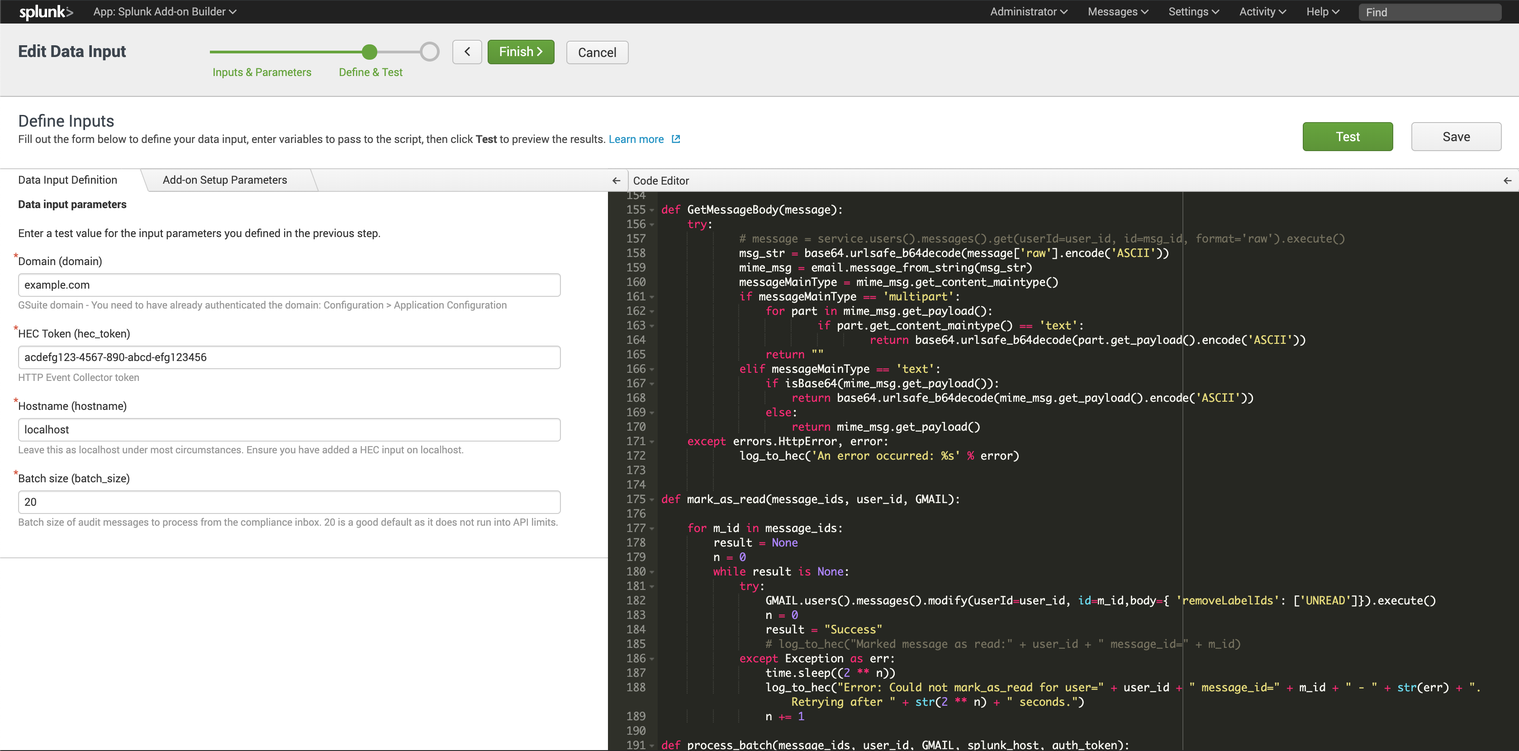

#SPLUNK INPUTS.CONF XML WINDOWS#
For example, there might be multiple organizations running many Windows servers with numerous services or applications that need to be monitored, but what all of them have in common is the requirement to gather a common set of WinEventLogs. Whether a host is running a web server, a custom app, or something else that will be monitored, you probably have one or more set of base inputs that will run on large groups of hosts. The destination may be Splunk Enterprise indexers, Splunk Cloud Platform indexers, or intermediate forwarders, which forward on to the indexers. This app configures where your forwarders send data, and any TLS encryption settings and certificates that go with it. Might include nf, tls-certificates, and nf If there is a change to the nf, such as new indexers added to a cluster, they can be changed by editing a single line in this single, global deployment app.
#SPLUNK INPUTS.CONF XML INSTALL#
This is the first app you install on your universal forwarders, as it will point them to the deployment server, where they will routinely phone home to have all configurations managed.Īll forwarders get this app. If you have a very large environment, you might have multiple deployment servers, sometimes separated to service groups of forwarders. Suggested AppĪll forwarders get this app. FeatureĪlert Action - Tag to Dynamic Address ListĬommand: pancontentpack with PAN-OS = 8.For more information on the configuration files named in the table, see List of configuration files in the Splunk Admin Manual. The permissions needed depend on which features will be used. Optionally, you can create a user for Splunk on the firewall or Panorama, and reduce the user's role to just what is required. Optional: Create a Splunk User on Firewall/Panorama Share context with Dynamic Address Groups.The credentials are encrypted by Splunk and used for the following features: Only one set of credentials can be entered with this name. To configure credentials, navigate to the Add-on, click the Palo Alto Networks menu in the top left of the App, and click Configuration.Įnter the credentials for your Firewall or Panorama and name the credentials "Firewall". To use Adaptive Response or the custom searchbar commands, please configure the Add-on with credentials for your Firewall or Panorama. Video: Applying Order to Computing Chaos Configure Adaptive Response Video from a session at Ignite 2015 explains Dynamic Address Groups in more detail with several use cases including asset management: The behaviors are defined by your security policy, and how you treat IP addresses with specific tags. You could tag an IP address/User for additional scrutiny by the Threat Prevention engine, or as a known trusted server to be given additional permissions. The firewall would add the IP address to the Dynamic Address Group in the policy automatically and begin blocking the IP.īlocking a bad actor is just the beginning, and you aren't limited to allow or deny as your options. Initially, no IP addresses would be blocked, but you can create a search in Splunk for criteria that represents a problem device, and trigger a tagging of that IP address with the 'bad-actor' tag. For example, you could create a rule in the security policy that blocks any IP address with the tag 'bad-actor'. Tagging an IP address/User means setting metadata or context on the firewall for that IP/User, which causes it to be added to corresponding Dynamic Address/User Groups in the firewall security policy. Share context with Dynamic Address/User Groups Use the pantag command to share context from Splunk to the firewall for automated remediation. Set Up Adaptive Response Automated Remediation


 0 kommentar(er)
0 kommentar(er)
